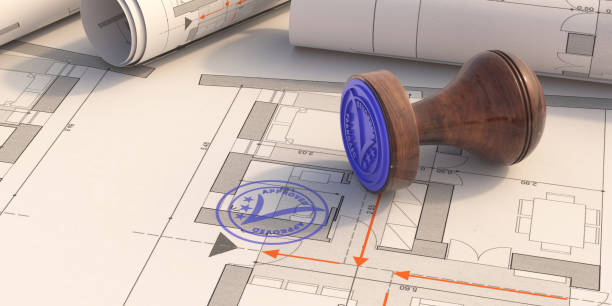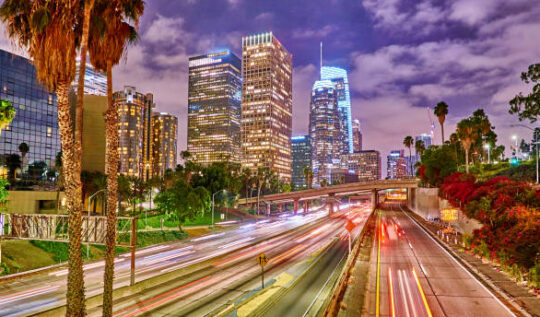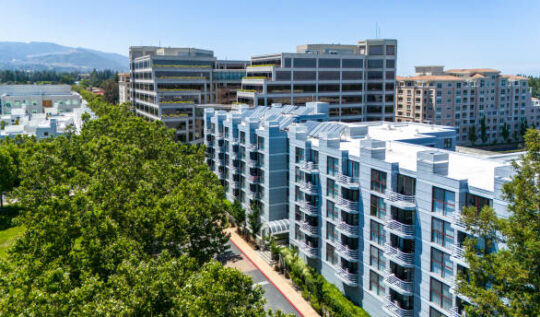How Can Developers Get JEDI Zones Permit Support in California?
Are you developing a property in a neighborhood that has historically been underserved—or one that’s facing new environmental pressures?
Table of Contents
ToggleYou might be working within a JEDI Zone, short for Justice, Equity, Diversity, and Inclusion Zones. These areas are part of a growing statewide and local effort to make the land use process fairer, faster, and more inclusive for everyone. But what does that mean for you as a developer, architect, or planning consultant?
This article will break it down:
What exactly is a JEDI Zone
Why permit support looks different in these areas
How to successfully navigate the process with help from the right experts
Whether you’re filing for entitlements, requesting a zone change, or beginning community outreach, here’s what California developers need to know.
JEDI Permit Process Flow
- Confirm eligibility within JEDI Zone boundaries
- Prepare conceptual plans and community benefit proposal
- Submit application with CEQA alignment
- Coordinate with city planning and JEDI liaison
- Receive approval and finalize permits
What Are JEDI Zones in California?
JEDI Zones are not a single program or agency—they’re a cross-section of land use designations, equity policies, and environmental justice overlays adopted by cities and counties to promote:
Affordable housing production
Investment in historically excluded communities
Sustainable and climate-resilient development
Culturally sensitive community engagement
Local governments may label these areas differently—such as Equity Priority Areas (EPAs) in Los Angeles, Environmental Justice Communities under SB 1000, or Disadvantaged Communities per CalEnviroScreen. But the goal remains the same: ensure new development aligns with equity and justice goals.

Why Permit Support Matters in JEDI Zones
Developing in JEDI Zones often triggers extra steps in the entitlement and permitting process. You might face:
Stricter community engagement standards
More detailed CEQA review, especially in environmental justice areas
Longer review timelines if public agencies or coalitions are involved
Equity-focused policies that affect unit mix, affordability levels, or tenant protections
That’s why having targeted permit support is so important. It helps:
Align your application with equity goals early on
Avoid delays due to missed community input
Build trust with planning staff and local residents
Qualify for fast-track programs or funding incentives
Key Types of JEDI Zone Designations
| Designation | Overseen By | Implications |
|---|---|---|
| Environmental Justice Areas (SB 1000) | City/County Planning Departments | Must consider equity impacts during General Plan updates and CEQA review. |
| Equity Priority Areas (EPAs) – LA Metro | Los Angeles Metro + SCAG | Can impact transit-oriented development incentives and design guidelines. |
| CalEnviroScreen Disadvantaged Areas | California Office of Environmental Health | Used to target cap-and-trade investments, CEQA screening, and housing funds. |
| Opportunity Zones (Federal) | IRS + Local Investment Boards | Offer tax incentives but are often overlaid with JEDI requirements at the local level. |
Who Provides JEDI Zones Permit Support?
Permit support for JEDI Zones doesn’t come from a single state agency. It’s provided by local planning staff, third-party consulting groups like JDJ, and sometimes community-based organizations working alongside developers.
The process may include:
Reviewing local zoning overlays
Coordinating with equity-focused nonprofits
Holding community workshops or listening sessions
Adapting your plans based on feedback from historically excluded groups
Streamlining pre-submittal meetings with City Planning
At JDJ Consulting Group, we help clients build a smart permitting strategy by working closely with these players from Day 1.
Key Steps to Getting Permit Support in a JEDI Zone
Let’s walk through what the process typically looks like.
1. Check if Your Project Falls Within a JEDI Zone
Start by mapping your site using tools like:
The City’s zoning map
SB 1000 Environmental Justice overlays
Metro’s Equity Focus Communities map
CalEnviroScreen data
Once you confirm that your project is in a JEDI Zone, additional rules may apply—even if your use is otherwise “by-right.”
2. Schedule an Early Consultation with Planning Staff
In JEDI Zones, early dialogue matters more than ever. Reach out to City Planning or work with a permit expediter to:
Understand which departments must review your application
Identify any equity-related studies or findings needed
Discuss pre-application requirements or hearings
Cities like Los Angeles, Oakland, and San Diego may require a Community Plan Implementation Overlay (CPIO) review or an EJ impact assessment.
3. Align Your Project with Local Equity Goals
You’ll want to show that your project:
Increases access to affordable housing
Preserves cultural and economic character
Enhances access to clean air, transit, and green space
Doesn’t displace existing vulnerable residents
This may mean adjusting your design, unit count, affordability mix, or open space ratios. You’ll also want to explain how your project benefits the community in both your planning statement and CEQA documents.
4. Engage the Community Proactively
Most cities require some form of outreach—but in JEDI Zones, that’s more than just a checkbox.
Plan for:
Door-to-door outreach or language-accessible mailers
Partnering with local community groups
Hosting interactive workshops or town halls
A transparent and inclusive outreach process can help you avoid opposition during hearings or environmental review stages.
5. Submit a Complete, Equity-Aligned Application
Include:
A clear project narrative addressing community benefits
Any required equity statements or EJ studies
Evidence of outreach
Mitigations for displacement or environmental harm
Cities are more likely to approve applications that don’t just meet code—but also demonstrate understanding of the community’s needs.

Understanding the CEQA Landscape in JEDI Zones
Projects in JEDI Zones are often subject to stricter CEQA (California Environmental Quality Act) review due to their proximity to environmentally sensitive areas or environmental justice communities. Developers need to understand how to manage this process without causing costly delays.
Tips to navigate CEQA efficiently in JEDI Zones:
Conduct a Pre-Application Meeting: Meet with planning staff early to flag potential CEQA triggers.
Use Qualified Environmental Consultants: Partner with CEQA experts who know local thresholds of significance.
Consider CEQA Exemptions: Some infill or transit-oriented projects may qualify for exemptions under SB 35 or AB 2011 if affordable housing is included.
Engage the Community Early: Environmental justice concerns can surface late in the process—avoid this by inviting input at the start.
JEDI Zone Eligibility Checklist
- 📍 Your project is within a designated JEDI zone
- 🏢 Your development includes mixed-use or affordable housing
- 👥 You’ve engaged local community organizations
- 🌿 The project aligns with CEQA or qualifies for an exemption
- 📝 You’re working with a permit consultant or land use strategist
Community Engagement Requirements
Public participation is more than just a formality in JEDI Zones—it’s a requirement. State law, including recent guidance from the Governor’s Office of Planning and Research (OPR), places high importance on meaningful engagement with underrepresented communities.
What does “meaningful engagement” mean?
Two-way communication, not just public notices
Language access for non-English speaking residents
Listening sessions and workshops that are convenient for working families
Incorporating feedback into the project design
Cities like Los Angeles, Oakland, and San Diego have adopted Community Benefits Agreements (CBAs) or similar frameworks that developers must comply with in these zones.
Common Permits Required in JEDI Zones
Depending on your location and project type, you may need:
| Permit Type | Description |
|---|---|
| Conditional Use Permit (CUP) | Required for uses not permitted by-right, like mixed-use or multifamily in single-family zones. |
| Site Plan Review | For projects over a certain unit or square footage threshold. |
| Environmental Assessment | If CEQA is triggered, an Initial Study or full EIR may be needed. |
| Zone Variance or Zoning Administrator Determination | If your project deviates from local zoning or overlays. |
| Community Design Overlay Approval | In neighborhoods with unique design or cultural preservation standards. |
JDJ Consulting Group helps clients identify which permits apply and works to fast-track them through city departments.
How JDJ Consulting Group Supports Developers in JEDI Zones
At JDJ Consulting Group, we understand the added layers of scrutiny, documentation, and outreach required for projects in JEDI Zones. Our permit expediting and entitlement services include:
Site eligibility research based on JEDI and state criteria
CEQA support coordination
Permit timeline mapping with realistic expectations
Preparation of community engagement strategies
Liaison with planning departments and stakeholders
We help ensure your project moves forward while meeting all regulatory and equity requirements.
Key Takeaways
JEDI Zones are expanding across California, especially in cities with active equity initiatives and SB 1000 implementation.
Developers must align with equity goals, including fair housing, anti-displacement, and environmental justice policies.
Permit support in JEDI Zones requires a layered strategy that includes CEQA navigation, robust public engagement, and legal compliance.
Working with a knowledgeable consultant like JDJ helps you save time, avoid risk, and build community trust.
Reach Out to JDJ Consulting: Your Reliable Partner in Land Consulting
Are you planning a development project in a designated JEDI Zone in California?
Our land use consultants can help you determine whether your project qualifies, identify the required permits, and navigate environmental and community engagement requirements with confidence. Call us at (818) 233-0750or contact us online to schedule a free consultation today.
FAQs About JEDI Zones Permit Support in California
What is a JEDI Zone in California?
A JEDI Zone refers to a Justice, Equity, Diversity, and Inclusion overlay or designated planning area where new development must meet additional requirements that promote fair housing, community equity, and environmental justice. These zones are often located in historically underserved neighborhoods.
Key features:
Prioritizes affordable housing and anti-displacement
Requires community engagement and inclusive outreach
May involve stricter CEQA review
How do I know if my property is in a JEDI Zone?
You can find out by checking your city or county’s planning overlays or using their GIS mapping tools. Many jurisdictions label JEDI or equity-focused areas under:
Environmental Justice maps (SB 1000)
Housing Element priority zones
Community Plan Implementation Overlays (CPIOs)
Consulting a land use expert or city planner is recommended for confirmation.
What types of projects are allowed in JEDI Zones?
JEDI Zones support a variety of projects—but with guidelines to protect community interests. Common permitted projects include:
Affordable or mixed-income housing
Small-scale infill development
Transit-oriented developments (TODs)
Community-serving commercial uses
Each project must align with equity and inclusion goals outlined in the zoning ordinance.
Do I need special permits for building in a JEDI Zone?
Yes. Projects in JEDI Zones typically require one or more discretionary permits. These may include:
Conditional Use Permits (CUP)
Site Plan Review
Zoning Administrator Determination
Environmental Assessment under CEQA
Permit requirements depend on your jurisdiction and project size.
How do JEDI Zones affect my entitlement timeline?
JEDI Zones can lengthen your entitlement timeline due to:
Additional community engagement requirements
More detailed CEQA or housing reviews
Coordination with multiple departments
To reduce delays:
Engage a permit expeditor early
Complete due diligence on site eligibility
Plan public outreach in advance
Are there benefits to developing in JEDI Zones?
Yes. Although the process can be more complex, the benefits include:
Access to density bonuses or expedited processing for affordable housing
Greater alignment with city housing goals
Community support when done properly
Potential eligibility for state or local funding
How does CEQA apply in JEDI Zones?
CEQA reviews in JEDI Zones may be more detailed, especially if the project affects environmental justice communities. Developers should be aware that:
Full Environmental Impact Reports (EIRs) may be required
Community concerns can delay approval if not addressed early
CEQA exemptions under SB 35 or AB 2011 may still apply if criteria are met
Always consult an environmental consultant familiar with local thresholds.
What is “meaningful community engagement” in a JEDI Zone?
It means more than just a public notice. It’s a legal and planning expectation for two-way communication with the affected community. Effective outreach includes:
Workshops held at accessible times and locations
Materials in multiple languages
Feedback loops that influence the final project
This is especially crucial in equity-designated neighborhoods.
Can I use SB 35 or AB 2011 in a JEDI Zone?
Yes, in some cases. These laws streamline approvals for qualifying housing developments. However:
The project must meet affordability and labor standards
Local conditions may still require CEQA review
JEDI Zones may add extra requirements like displacement analysis
Check your city’s specific guidance for these fast-track laws.
What cities in California have JEDI Zones?
Many major cities now incorporate JEDI principles in planning. Examples include:
Los Angeles – through CPIOs and Housing Element sites
San Diego – in Environmental Justice Communities
Oakland – under the Equitable Development Initiative
San Francisco – via Community Benefits Ordinances
Each city applies the concept differently, often under unique zoning overlays.
Can developers appeal JEDI Zone requirements?
In most cases, no. These requirements are codified in zoning law or city council-approved plans. However:
Variances may be available for hardship cases
Community input may lead to negotiation in design
Legal challenges are rare and costly
Work with a local entitlement consultant to explore all options before considering appeal.
How can JDJ Consulting Group help with my project in a JEDI Zone?
JDJ Consulting Group offers full-service consulting for entitlements, permits, and feasibility studies in JEDI Zones across California. We help by:
Researching site eligibility and zoning overlays
Coordinating CEQA and environmental review support
Developing effective public outreach strategies
Navigating complex city processes for faster approvals
Our team ensures your project moves forward while meeting every community and legal requirement.






How to Use Al Fresco Permit Fee Subsidy (Up to $10,000 Savings)
July 23, 2025
[…] Consulting helps clients in JEDI zones prepare complete permit applications and unlock incentives […]
Entitlement Costs Los Angeles 2025: What You Should Expect
August 7, 2025
[…] for possible reductions or exemptions under programs like Transit-Oriented Communities (TOC), the JEDI Zone, and California SB […]